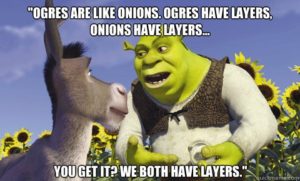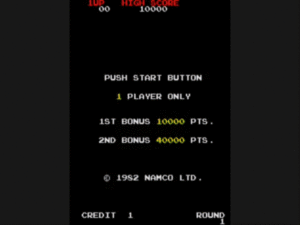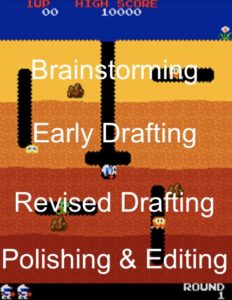by Casey Kenworthy, Peer Consultant, University Writing Center
Do you remember that scene in Shrek, where Shrek explains to Donkey what ogres are like…?
You wanna know what else has layers, Shrek? Writing.
Yep, believe it or not, your writing goes through many different layers, all of which serving specific purposes that prod you along from start to finish. In general, there are 4 main layers all writers (should) experience: brainstorming, early drafting, revised drafting, and polishing.
Although the definitions of each of these layers might vary from writer to writer, I personally define these layers like so:
Brainstorming – You are thinking of ideas for your writing. This is when you can stretch your brain out and spit some thoughts (both complete and incomplete) out onto paper.
Early Drafting – You’ve already started writing sentences and putting them into paragraphs, and you’re still playing around with content. As a whole, it looks like a literary train wreck, but that’s okay, because you’re still in the beginning! You might spend most of your writing time in this layer.
Revised Drafting – You’ve now got yourself a solid piece of writing. Ideas are clear, content is organized appropriately, and the overall flow is smooth.
Polishing & Editing – Now that all the important stuff in the revise layer is finished, now you can give your writing a good ol’ fashioned spit shine and check for grammatical and vocabulary mistakes. This should always be the last layer you focus on in the writing process.
To illustrate how these layers are followed during the writing process, there’s no better visual aid than the classic 1982 Namco arcade classic: Dig Dug.
For those of you who’ve been deprived the joy of playing this retro gaming masterpiece, the main goal of Dig Dug is to move through the different earthy layers and blow up all the monsters (that red ball with yellow swimming goggles and the green fire breathing dinosaur) with an air pump.
The layers and gameplay of Dig Dug easily illustrates how a writer typically maneuvers through the writing layers.
Needless to say, you start at the top, and work your way to the bottom. Just like in Dig Dug, however, you’ll come across some enemies that’ll try to keep you from finishing the level—or in this case, the writing assignment.
These annoying pipsqueaks are procrastination. We all experience it, and if left unattended, it will really mess up your writing morale.
These fire-breathing jerk-wads are writing stress. They represent all those ripping-hair-out-of-your-head moments when you feel like you can’t write another word down, but still have a whole paper left to write.
These skull-cracking deathtraps are writer’s block (or maybe writer’s “rock”?). This is when writing confusion falls down and squishes you from moving onwards.
And this is you! Go onward, brave writer, and explore the different layers of the writing process!








